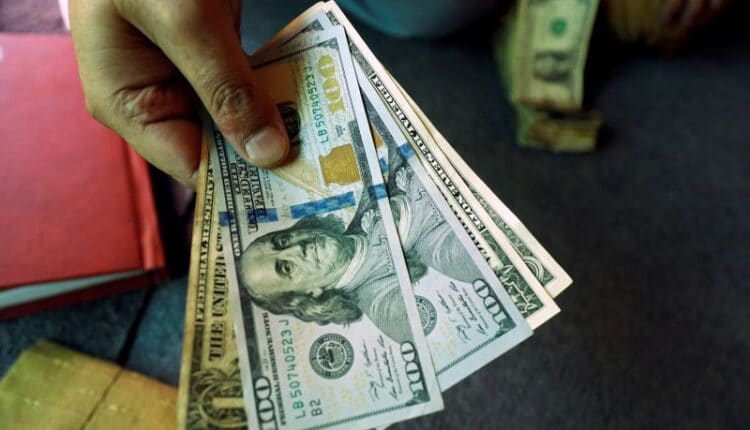Dollar climbs against yen as Fed’s inflation shift drives yields higher
By Eimi Yamamitsu
TOKYO (Reuters) – The dollar hit a two-week high against Japan’s yen on Friday, supported by U.S. bond yields, which rose on the Federal Reserve’s aggressive new strategy to lift employment and an increased tolerance for higher inflation.
Investors in Asia are also keenly awaiting a briefing from Japanese Prime Minister Shinzo Abe later in the day, as worries about his health fuelled wider concerns about his leadership and what that might mean for economic relations with the United States.
The safe-haven yen fell against the dollar, dropping 0.26% to 106.695 per dollar , its lowest since Aug. 14 and edging near this month’s low of 107.05.
Speaking at the Fed’s Jackson Hole symposium, which was held virtually this year, Chair Jerome Powell said the central bank will seek to achieve 2% inflation on average, so that periods of super-low inflation would likely be followed by an effort to lift inflation “moderately above 2% for some time,” and to ensure economic recovery and job creation.
“Since FOMC meeting in June, the treasury yields have declined and the dollar fell, but I think that will not be the case for the time being, especially after the Fed’s speech. The market is more likely to see higher treasury yields,” said Masafumi Yamamoto, chief currency strategist at Mizuho Securities in Tokyo.
The benchmark 10-year (US10YT=RR) yield, which rises when bond prices fall, rose to 0.7700% in Asian trade, a level unseen since June 16.
“It’s clear we saw a ‘buy the rumour, sell the fact’ play out, notably in U.S. Treasuries, which have led broad market moves,” said Chris Weston, Head of Research at brokerage Pepperstone in Melbourne.
“The move higher in Treasury yields post-Powell did promote a USD rally, although we find it flat on the day, with a mixed picture across the well-traded FX pairs.”
Following Powell’s comments, the dollar initially fell sharply against the yen and the euro, but reversed as longer-term U.S. Treasury yields bounced back to their highest levels in months.
The yen also fell against the euro (EURJPY=), the Australian dollar (AUDJPY=) and the New Zealand dollar (NZDJPY=) on higher U.S. Treasury yields.
The euro changed hands at $1.18565 (EUR=), after almost hitting last week’s low of $1.17545 overnight.
Against six major currencies, however, the dollar index (=USD) edged down 0.23% to 92.817, erasing its earlier gains.
Traders in the yen now shift their focus to Japanese Prime Abe’s news conference.
Ruling party officials have said Abe’s health is fine, but his recent hospital visits, one of which ran nearly eight hours, have fanned speculation whether he will be able to continue in the job until the end of his term in September 2021.
“There is no doubt the relationship between Prime Minister Abe and President Trump has stabilised U.S.-Japan ties. That has been a positive factor, or a support for the dollar/yen,” said Tohru Sasaki, head of Japan market research at J.P. Morgan.
“There wouldn’t be any immediate, direct impact to the market since politics affect the market only subtly. However, if the possibility arises that such relationship between the two countries could change, that would gradually become an instability factor,” he said.
Elsewhere in the currency, the offshore yuan last traded at 6.8724 per dollar .
The British pound changed hands at $1.3243 , after hitting its highest since Dec. 31 of $1.3284 on Powell’s comments.
The Australian dollar rose 0.37% to $0.72860 , while the kiwi gained 0.36% at $0.6662 per dollar.

